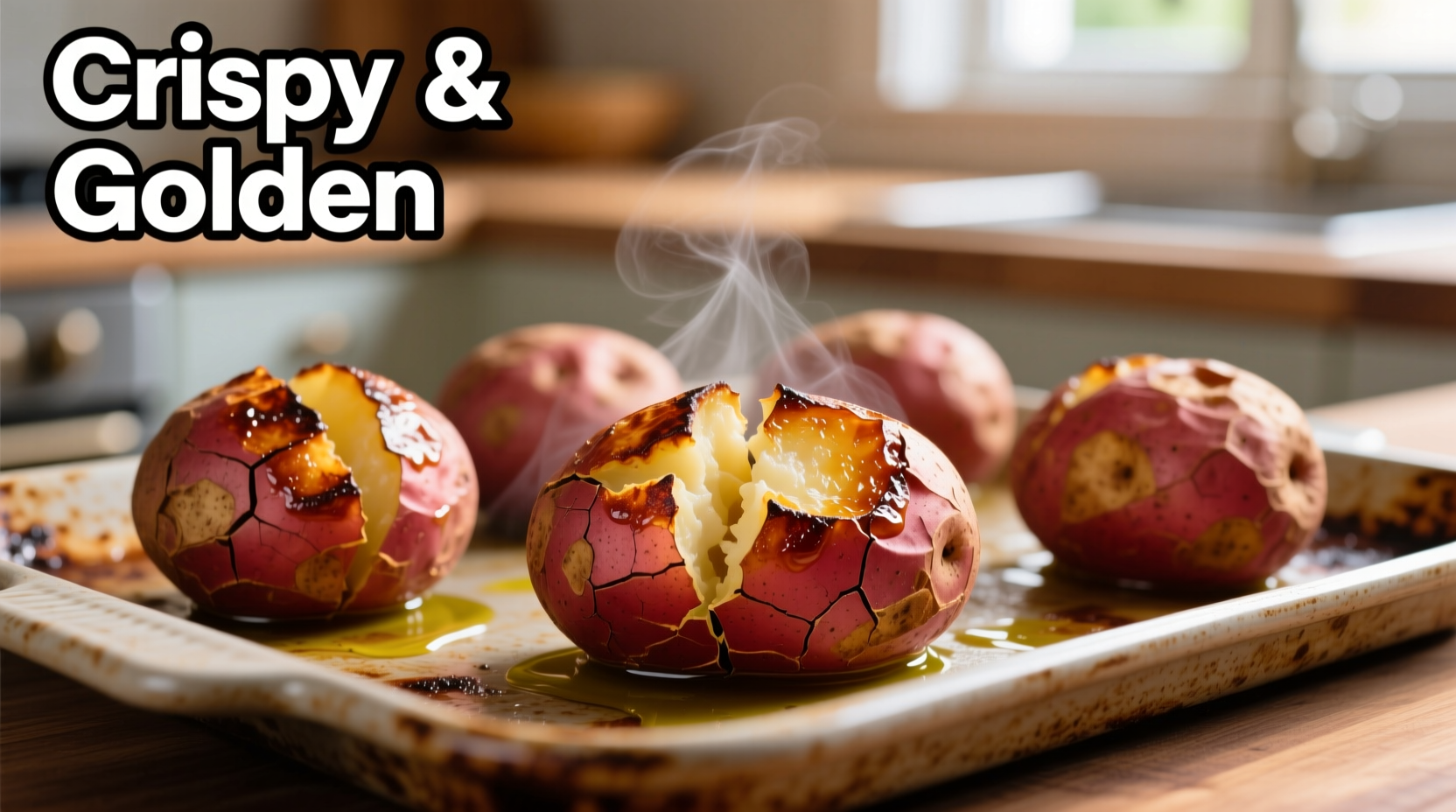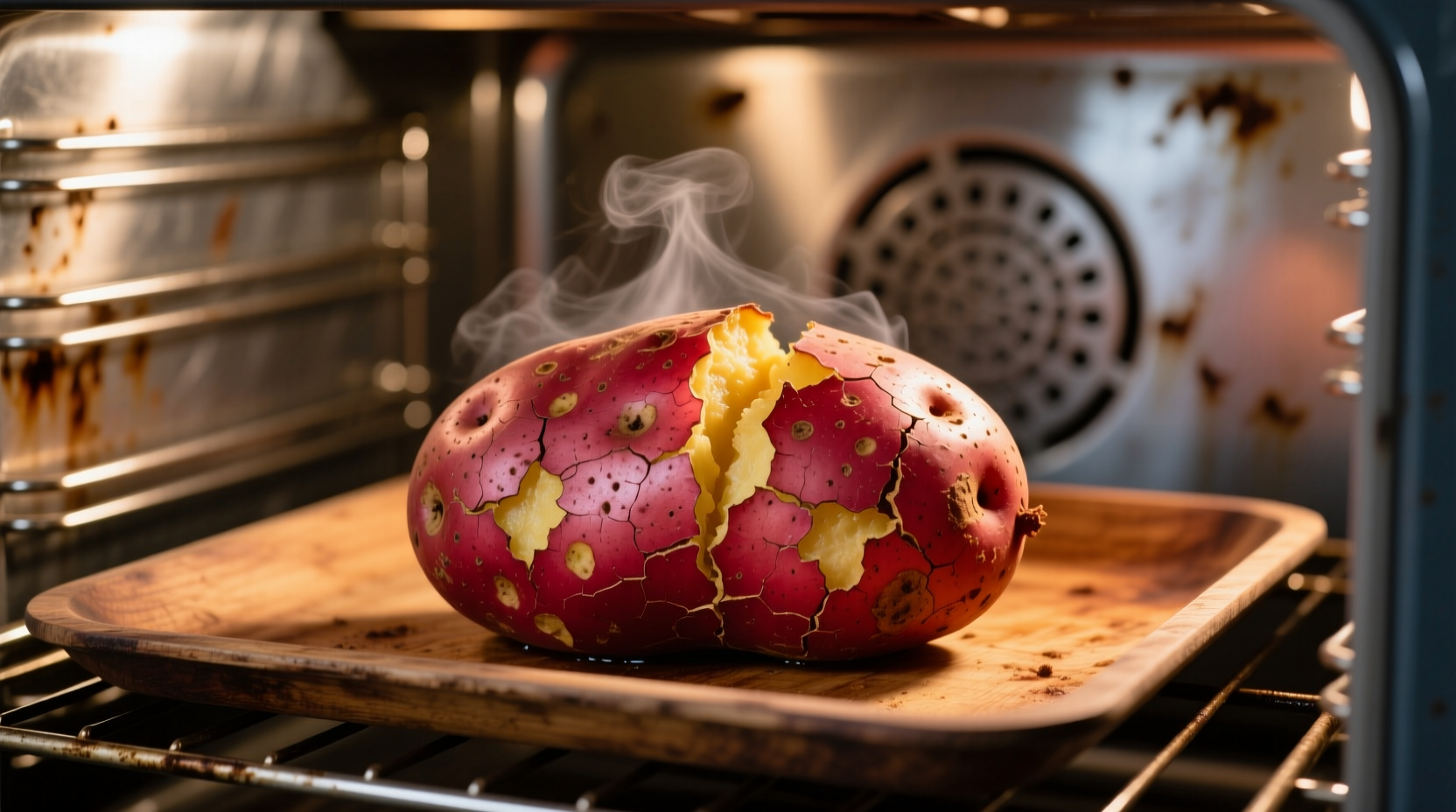Perfectly roasted red potatoes in the oven require 400°F (204°C) for 35-55 minutes with proper spacing on a baking sheet. The ideal internal temperature is 205-212°F (96-100°C), yielding crispy skin and fluffy interior without peeling. This foolproof method works for whole, halved, or cubed potatoes with minimal prep time.
There's nothing quite like the satisfying crunch of perfectly roasted red potato skin giving way to a light, fluffy interior. Forget soggy, unevenly cooked potatoes—this comprehensive guide delivers restaurant-quality results every time you fire up your oven. Whether you're preparing a simple weeknight side or an impressive holiday accompaniment, mastering oven-roasted red potatoes elevates your cooking game with minimal effort.
Why Red Potatoes Shine in the Oven
Red potatoes' naturally thin skin and waxy texture make them ideal for oven roasting compared to starchy varieties like Russets. Their lower starch content (16-18% versus Russets' 20-22%) prevents disintegration during cooking while maintaining structural integrity. The thin skin crisps beautifully without needing removal, sealing in moisture while developing complex flavors through the Maillard reaction.
| Potato Variety | Starch Content | Best Cooking Method | Skin Characteristics |
|---|---|---|---|
| Red Potatoes | 16-18% | Oven roasting, boiling | Thin, delicate, edible |
| Russet | 20-22% | Baking, mashing | Thick, requires peeling |
| Yukon Gold | 17-19% | Boiling, roasting | Medium thickness |
Preparation: The Foundation of Perfect Roasting
Start with firm, blemish-free red potatoes of uniform size for even cooking. Contrary to popular belief, peeling red potatoes wastes valuable nutrients concentrated in the skin and eliminates the textural contrast that makes roasted potatoes special. Instead, scrub thoroughly with a vegetable brush under cold running water to remove dirt while preserving the skin's integrity.
Drying is crucial—moisture prevents proper browning. Pat potatoes completely dry with clean kitchen towels or allow air-drying for 10 minutes. For whole potatoes under 2 inches in diameter, leave them intact. Larger potatoes should be halved or quartered to ensure even cooking. Never cube red potatoes smaller than 1-inch pieces, as they'll overcook before developing proper crispness.
Seasoning Strategy: Flavor Science
The magic happens with proper oil selection and seasoning timing. Use high smoke-point oils like avocado or grapeseed oil (smoke point 400°F+/204°C+) rather than olive oil, which breaks down at roasting temperatures. Toss potatoes with 1½ tablespoons oil per pound—enough to coat but not pool.
Season after oiling to prevent salt from drawing out moisture too early. The ideal ratio: 3 4 teaspoon kosher salt and 1 4 teaspoon black pepper per pound. For herb variations, add dried herbs (rosemary, thyme) before roasting but reserve fresh herbs until the final 5 minutes to preserve volatile flavor compounds. Garlic lovers: add whole cloves (not minced) to prevent burning.
Oven Technique: Precision Matters
Preheat your oven to 400°F (204°C)—lower temperatures yield soggy results, while higher temps burn exteriors before interiors cook. Use a heavy-duty rimmed baking sheet; dark metal pans promote better browning than glass or ceramic.
Arrange potatoes in a single layer with space between pieces—overcrowding creates steam that prevents crisping. For optimal results, place the baking sheet on the middle rack with an empty sheet pan on the rack below to catch drips and maintain consistent oven temperature. Rotate the pan halfway through cooking for even exposure.
Roasting Transformation Timeline
- 0-15 minutes: Moisture evaporates from surface, initial browning begins
- 15-30 minutes: Maillard reaction accelerates, starches gelatinize
- 30-45 minutes: Skin crisps, interior becomes fluffy (whole potatoes)
- 45-55 minutes: Deep golden color, internal temperature reaches 205°F
Doneness Indicators: Beyond Guesswork
Visual cues alone can deceive—proper doneness requires multiple verification methods. The skin should appear deeply golden with crisp, slightly shrunken edges. When pierced with a thin skewer, it should slide in with no resistance. For scientific precision, use an instant-read thermometer: 205-212°F (96-100°C) indicates perfect starch gelatinization.
Avoid the common mistake of removing potatoes too early—they'll seem firm but turn out dense and undercooked. Similarly, overcooked potatoes develop dry, crumbly interiors despite perfect exterior appearance. The sweet spot delivers tender-but-intact texture that holds its shape when cut.
Serving and Storage Wisdom
Rest roasted potatoes for 5 minutes before serving—this allows residual heat to finish cooking the interior while redistributing moisture. For maximum crispness, finish with a sprinkle of flaky sea salt immediately before serving.
Store leftovers in an airtight container in the refrigerator for up to 4 days. Reheat in a 400°F oven for 10-12 minutes (not microwave) to restore crispness. Never leave cooked potatoes at room temperature longer than 2 hours per USDA food safety guidelines (USDA Food Safety and Inspection Service).
Troubleshooting Common Issues
Soggy potatoes? Your oven temperature was too low or potatoes were overcrowded. Next time, increase heat to 425°F and use two pans.
Burnt edges but raw centers? You likely cut uneven pieces. Always aim for uniform size and rotate the pan halfway through cooking.
Dry, crumbly texture? Overcooking is the culprit. Check doneness 5 minutes earlier next time, especially with smaller potato varieties.
Lack of crispness? Moisture is the enemy. Ensure thorough drying after washing and avoid adding wet ingredients like fresh herbs too early.

When This Method Works Best (and Limitations)
This technique excels for standard red potatoes up to 3 inches in diameter. For fingerling varieties, reduce temperature to 375°F and check 10 minutes earlier. Avoid this method for potatoes showing green spots or significant sprouting—these indicate solanine buildup which isn't eliminated by cooking (FDA Food Code).
Altitude adjustments: Above 3,000 feet, increase temperature by 25°F and extend cooking time by 10-15% to compensate for lower atmospheric pressure. In convection ovens, reduce temperature by 25°F while maintaining time.











 浙公网安备
33010002000092号
浙公网安备
33010002000092号 浙B2-20120091-4
浙B2-20120091-4